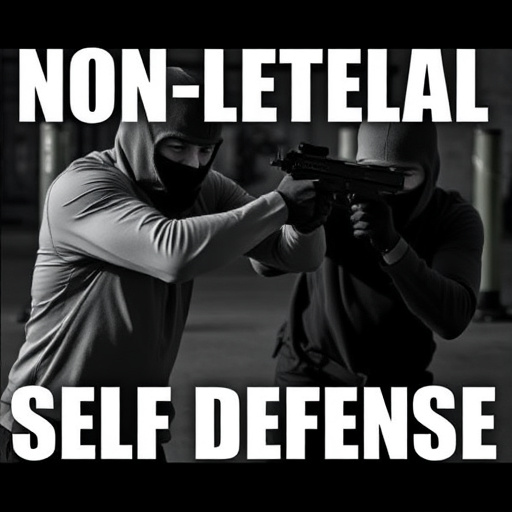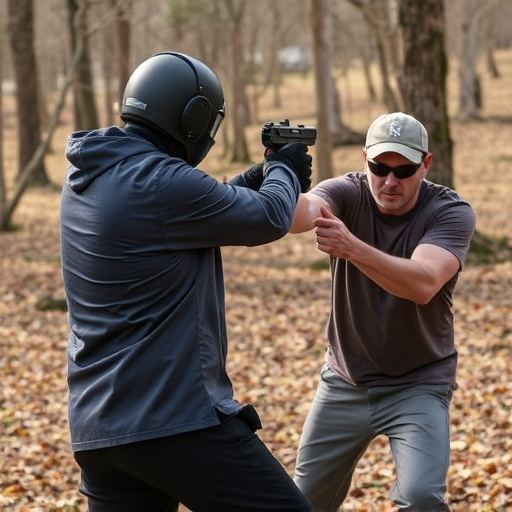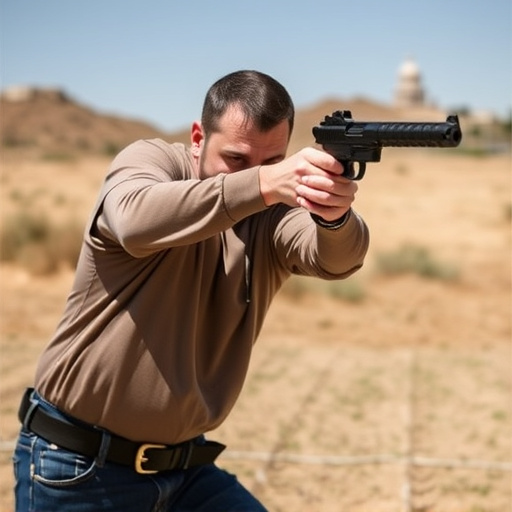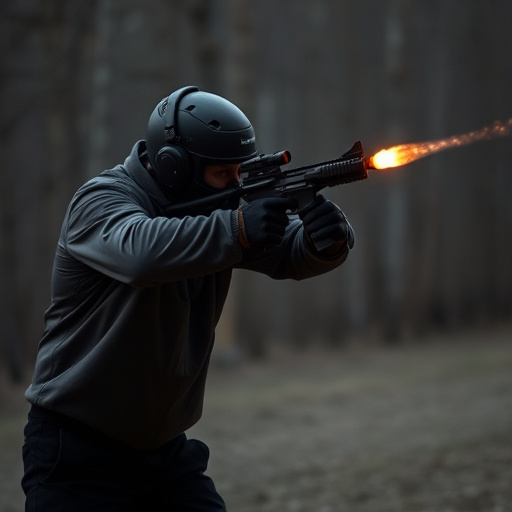Electrical current spread patterns are crucial in designing efficient and safe stun guns, especially within a defined price range for top-tier options. High conductivity materials enable effective current transmission, while low conductivity ones concentrate it, impacting device performance and safety. Stun gun effectiveness hinges on precise current distribution, prong design, and engineering quality, with prices ranging from $30 to over $200. Advanced manufacturers use specialized materials and innovative designs to optimize current flow, ensuring powerful shocks without compromising affordability or safety, as demonstrated in both stun guns and electronics manufacturing.
Electrical current spread patterns play a pivotal role in understanding how stun guns deliver their powerful shock. This article delves into the intricate dynamics of these patterns, exploring key factors like conductivity and its impact on current flow. We dissect the influencing elements behind stun gun effectiveness, offering insights into the price range for quality models and safety considerations essential for responsible handling. Through real-world applications and case studies, we unveil the multifaceted world of stun guns, guiding readers in making informed decisions.
- Understanding Electrical Current Spread Patterns
- The Role of Conductivity in Current Flow
- Factors Influencing Stun Gun Effectiveness
- Price Range for Quality Stun Guns: What You Get for Your Money
- Safety Considerations: Handling Stun Guns Responsibly
- Real-World Applications and Case Studies
Understanding Electrical Current Spread Patterns

Electrical current spread patterns are crucial in understanding how and where energy flows through various materials, including living tissue. By analyzing these patterns, we gain insights into the behavior of electricity at different voltages and currents, which is essential for designing efficient electrical systems. In the context of stun guns, where high voltage is delivered over a brief period, the spread of current through the body becomes critical—not just for the effectiveness of the device but also for safety.
Quality stun guns, often priced in a specific range (considering their specialized nature), employ sophisticated electrical designs to ensure precise control over current flow. This not only maximizes the stun’s impact on the target but also minimizes collateral damage and risk to bystanders. Thus, understanding current spread patterns is not just an academic exercise; it directly influences the development of safer and more effective electroshock weapons within a defined price range for quality stun guns.
The Role of Conductivity in Current Flow

In the context of electrical current spread pattern analysis, conductivity plays a pivotal role in dictating how and where current flows. Materials with high conductivity, like copper or certain types of metal alloys, facilitate the efficient movement of electrons, enabling rapid and consistent transmission of electric current. Conversely, materials with low conductivity, such as insulators or specific polymers used in stun guns within their price range (often designed to balance quality and cost), impede current flow, ensuring energy is concentrated at specific points, like the electrodes of a stun gun, for its intended effect.
Understanding this dynamic is crucial when analyzing current spread patterns, especially in high-performance devices or, more tangentially, assessing the quality of affordable options like certain stun guns within budget ranges. For instance, the conductivity of materials used in manufacturing directly influences the distribution and intensity of current, affecting both the efficiency and safety of the device. This is particularly relevant for consumers considering their options, as they may be interested not just in the price range for quality stun guns but also in how those guns distribute electrical current to ensure safety and effectiveness.
Factors Influencing Stun Gun Effectiveness

The effectiveness of a stun gun, or electroshock weapon, is influenced by several key factors that go beyond its apparent power. One of the primary considerations is the device’s electrical current spread pattern. This pattern dictates how the current flows and affects the target, so manufacturers meticulously design their stun guns to deliver precise, concentrated jolts for maximum impact within a specific distance range.
Additionally, the price range for quality stun guns plays a significant role in their overall performance. Higher-end models often boast improved engineering and materials, resulting in better current distribution, increased durability, and longer battery life. These factors contribute to a more reliable and effective stun gun experience. Moreover, the design and shape of the prongs or probes on the device’s contact points are crucial; they must pierce skin effectively to complete the electrical circuit and deliver the intended shock.
Price Range for Quality Stun Guns: What You Get for Your Money

When considering a stun gun for personal safety, understanding the price range for quality options is essential. The market offers a wide variety of stun guns at different price points, each with varying features and performance levels. Generally, prices can range from as low as $30 to over $200, depending on factors such as brand reputation, technology, power output, and additional safety features.
Within this price range, consumers can find basic models suitable for everyday carry, as well as more advanced units with enhanced durability and powerful jolts. Higher-end stun guns often incorporate innovative designs, durable materials, and smart safety mechanisms, ensuring a reliable and effective tool while justifying the higher cost.
Safety Considerations: Handling Stun Guns Responsibly

When analyzing the spread pattern of electrical current, especially with devices like stun guns, safety is paramount. Stun guns, known for their non-lethal impact, still deliver a significant electric shock that can cause temporary incapacitation. However, it’s crucial to handle these devices responsibly to ensure user safety and reduce the risk of accidental shocks or damage. The first step involves understanding the device’s operating voltage and current capacity, which varies by model but typically ranges from 50,000 to 120,000 volts. This knowledge is key for correct usage and storage, as improper handling could lead to electrical hazards.
Additionally, users should always refer to the manufacturer’s guidelines, which include recommendations on trigger control, range limitations, and safe storage practices. Stun guns should be kept out of reach of children and stored in a secure location, away from metal objects that could act as conductors and potentially amplify the shock. Investing in quality stun guns within the recommended price range—typically ranging from $50 to $200—ensures both performance and safety features like durable construction and reliable triggering mechanisms. This balance between effectiveness and cost contributes to making stun guns a viable option for personal safety while minimizing associated risks.
Real-World Applications and Case Studies

In various real-world scenarios, understanding the spread pattern of electrical current is pivotal for safety and efficiency. One notable application lies in the field of stun guns, where the precise control of electric current flow can significantly impact the device’s effectiveness and user safety. A case study could focus on how advanced stun gun manufacturers utilize specialized materials and designs to optimize current distribution, ensuring a powerful yet controlled shock, while maintaining a specific price range for quality stun guns that makes them accessible for personal and professional use.
Moreover, this analysis plays a crucial role in industries such as electronics manufacturing, where engineers must navigate complex circuit boards and components. Case studies demonstrate how researchers and professionals employ simulation tools to predict current flow, enabling them to prevent overheating, reduce energy loss, and enhance overall system performance. This approach not only optimizes the design process but also contributes to creating more affordable, yet high-quality, electronic devices.
Electrical current spread pattern analysis is a crucial aspect of understanding the effectiveness and safety of stun guns. By examining how conductivity influences current flow, we can better navigate factors that impact stun gun performance. Moreover, considering the price range for quality stun guns allows users to make informed decisions, balancing features, reliability, and cost. Ultimately, responsible handling, as discussed in safety considerations, ensures these powerful tools are used effectively while minimizing risks. Real-world applications and case studies further underscore their versatility and importance across various scenarios.
